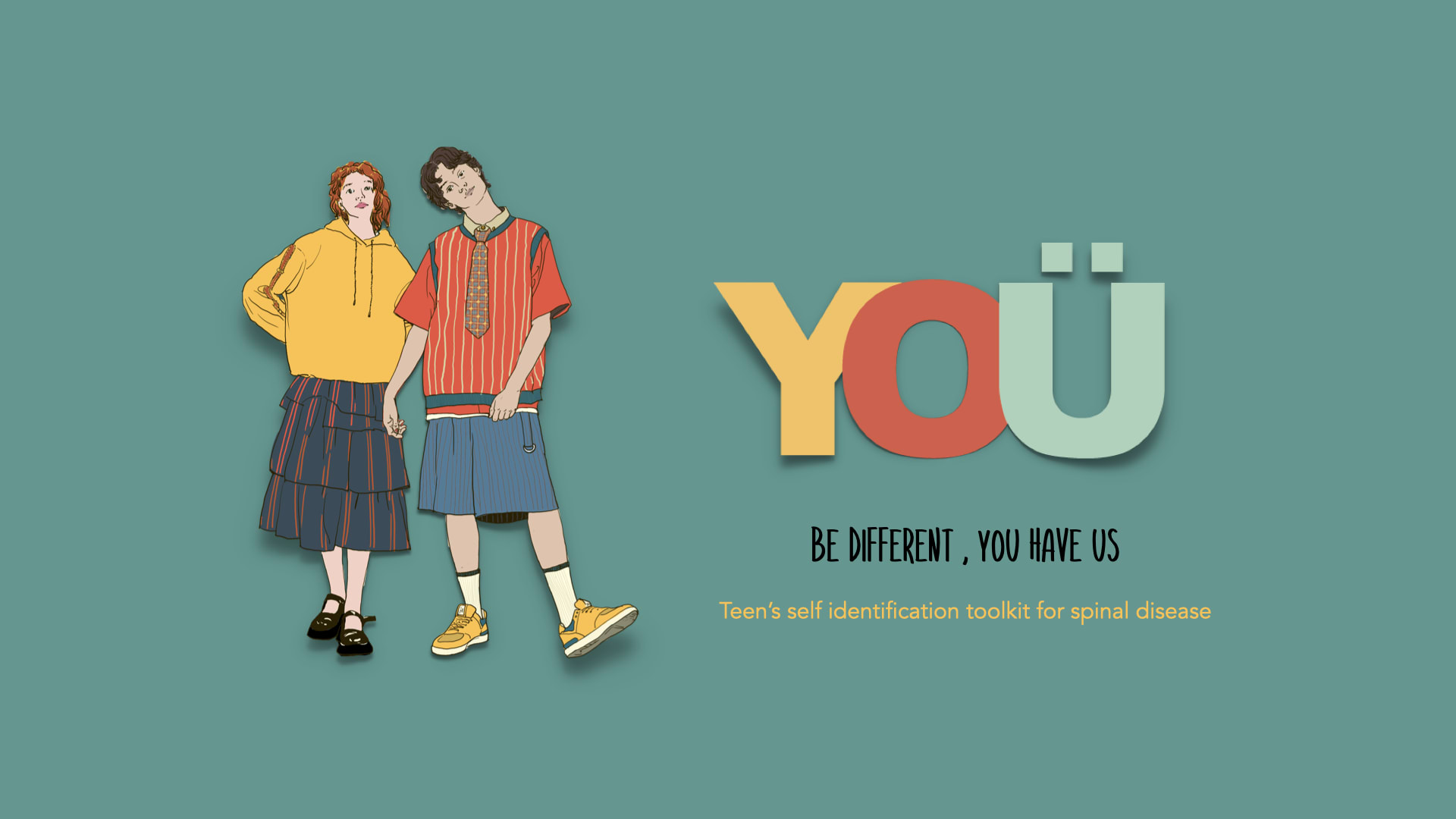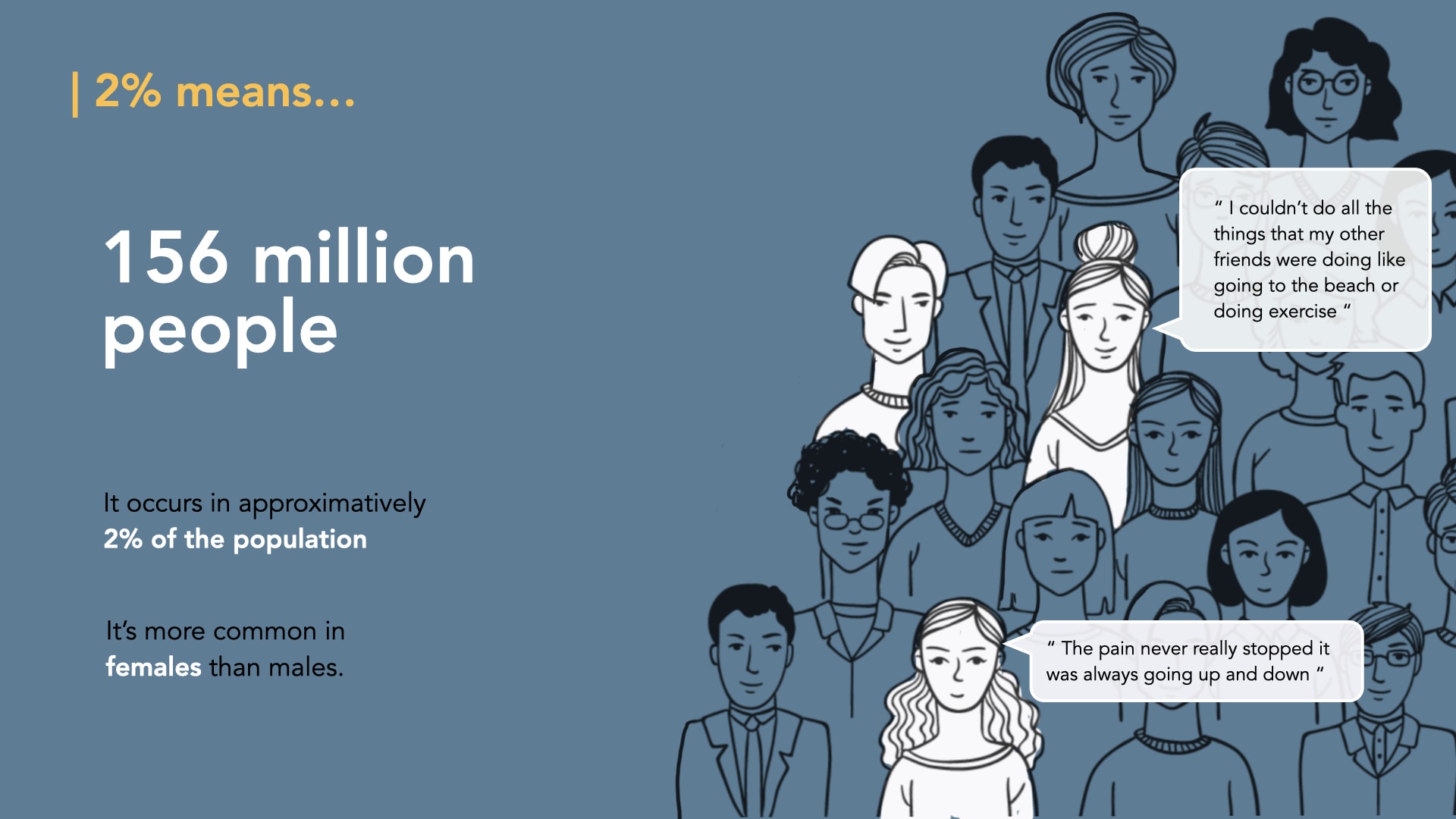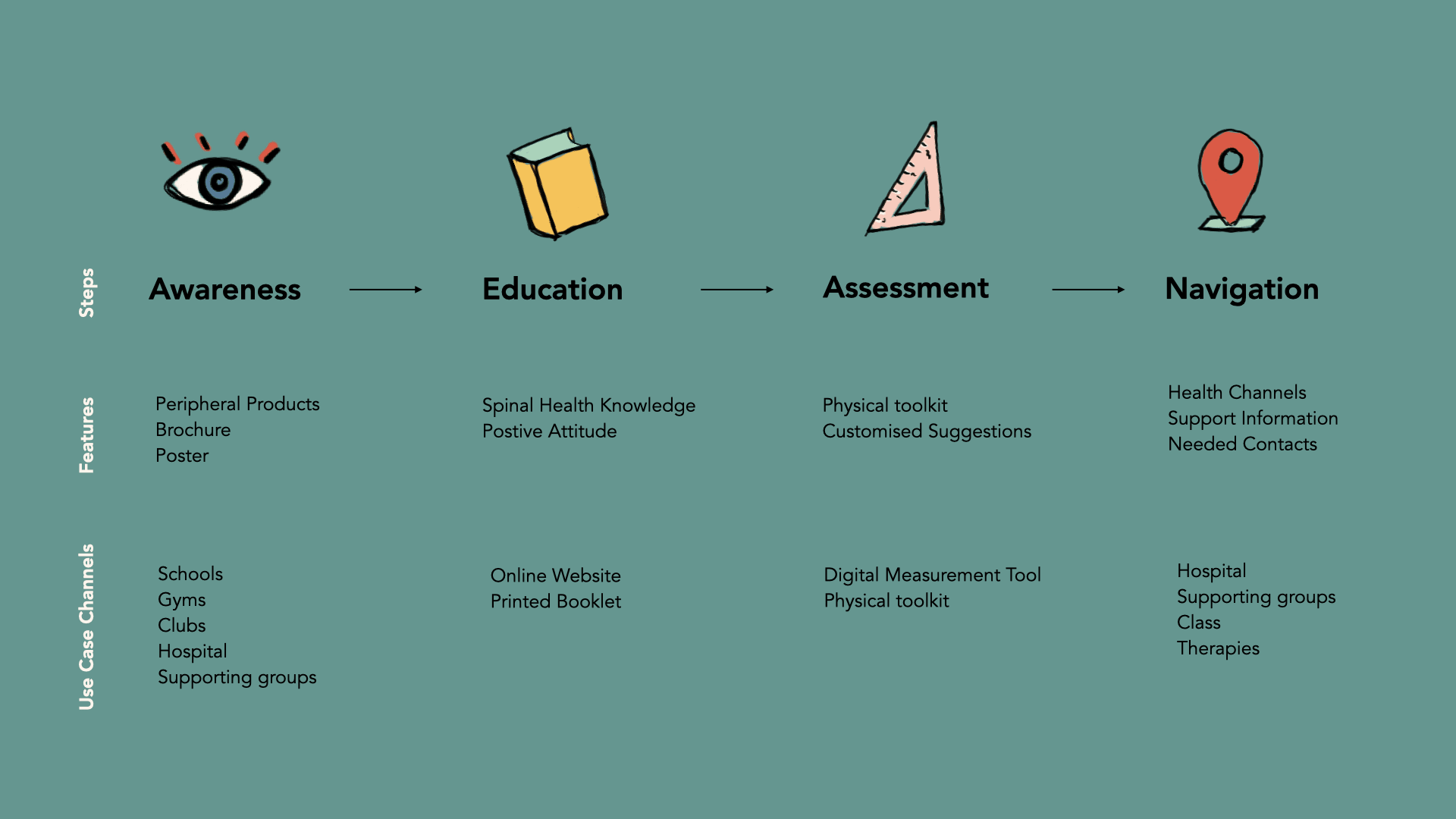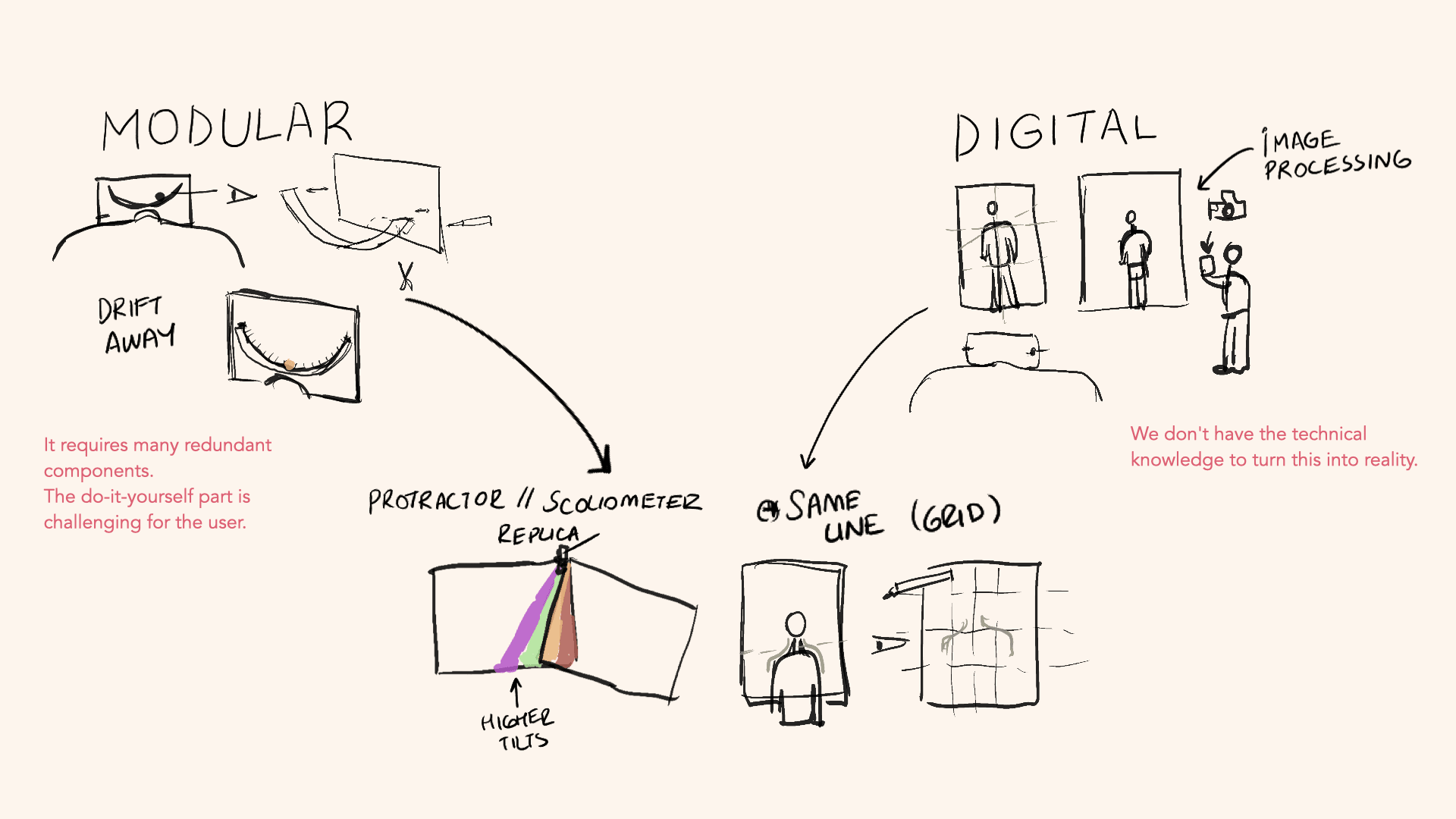Hi, I am Yulin, a multi-disciplinary designer from China. I studied Architecture at the University of Liverpool. I have several internship experiences in design companies, specialising in 3 D modelling, information analysis and visual graphics. As a designer, I spark joy for being a designer, solving problems and creating new things. In RCA I am lucky to have chances to work with talented people from diverse backgrounds on multiple projects.
Yulin Ran


Today, 156 million people = 2% of the world population have been affected by Scoliosis. With this percentage, dozens of people around you may be openly or personally coping with this condition.
But what is Scoliosis? It's a health condition where the spine twists sideways that starts during puberty. In the early stage, bracing is the most common method to stop the curve from getting progressed, but when the curve gets severe people need to consider surgery, which has risks but a necessary treatment to stop the disease before it affects other organs and the body mechanics. All the treatment methods have an impact and the inherent risk that brings to people.
Therefore, early discovery of spinal conditions can be a lifesaver for any young person. our project YOU is a cross-media service with a three-step spinal health assessment kit that uses practical self-examination tools and customized navigation to help teens catch scoliosis symptoms early and build a positive attitude towards body posture.


Medium:
Toolkit booklet & Online platform






Special thanks; to David Eveleigh Evans, our project tutor who always believed in this project with his inspiring mentoring, to our project consultants for their inspiring assistance Amy Matrai from NHS Digital Academy, Andres Lopez Josenge from VISA, Dr. XInchao Li from Fudan University, and Dr. Taner Gunes from Acibadem Hospitals, to our project participants who added constant value to this project & All MA Service Design Tutors for giving us a lifetime opportunity here at the RCA.